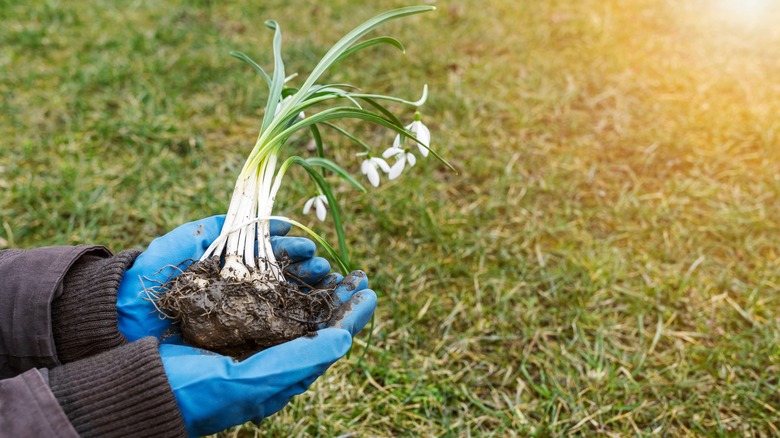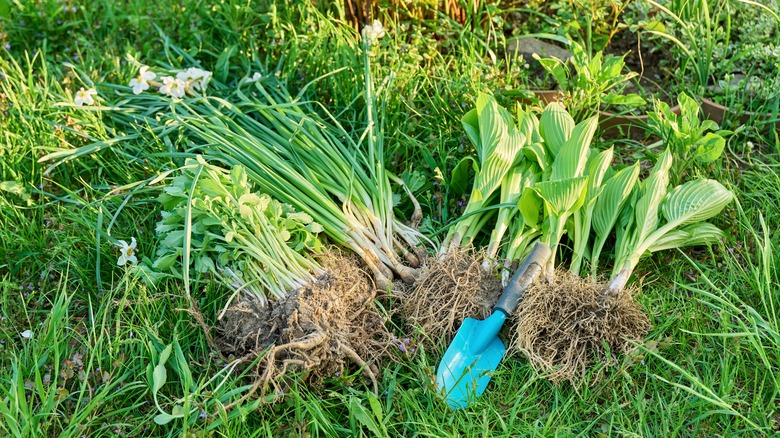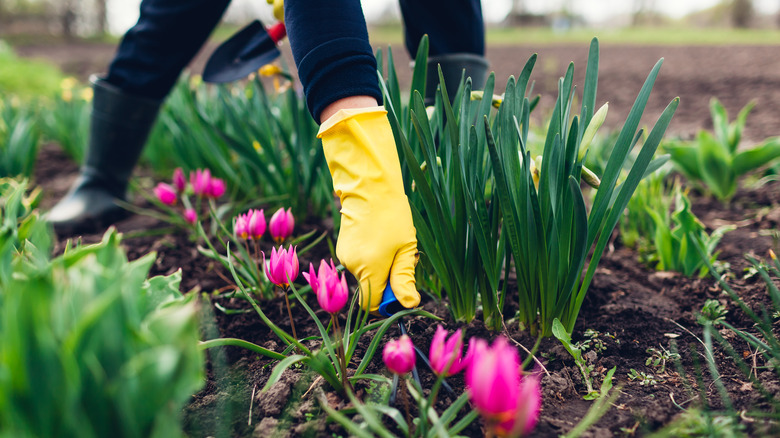Can You Dig Up Spring Bulbs If They're Still Blooming? Our Professional Gardener Weighs In
We wait all winter for those spring bulbs to appear, and then, oops! We planted those tulips a bit too close to that other spring perennial that's also coming up. We don't feel too dumb because, well, that perennial was dormant and not really visible when we planted tulip bulbs in late November. But now we have a dilemma, because these plants are growing too close together. Which one to dig up? Is it okay to dig up spring-blooming bulbs while they're still blooming? The short answer is, yes, sometimes. But you should take extra care when relocating your blooming bulbs to avoid damaging or distressing the plants.
Digging up any plant while it's flowering is usually not recommended. All of the plant's energy is going into producing flowers, so digging it up or dividing it causes stress at a time when the plant doesn't have its usual amount of energy to protect itself. This is why dividing perennials is usually recommended during dormant times like early spring or autumn.
However, sometimes you need to move plants even when the timing isn't perfect. Just be prepared to lose a few blooms, for some petals to drop off, or for the foliage to sag a bit. I've occasionally had to move spring blooming bulbs for clients, and I've observed that the type of bulb, as well as timing, are factors in how the plants are affected.
Pros and cons of digging up bulbs in spring
The obvious pro to moving bulbs while they're blooming is that you can showcase other plants by giving them more space. Another pro is that moving bulbs to another spot gives you more spring flowers throughout your garden. But the cons should be considered: the main one is that you may lose petals or entire flowers.
Different types of spring bulbs react differently to being moved while they're in bloom. Generally, digging up tulips while they're blooming will cause petals to drop, unless you do it before the flowers have opened. Moving hyacinths, muscari, or daffodils shouldn't be too bad if done carefully. With early spring bulbs like snowdrops or scilla, it's best to wait until the blooms start to fade, as they might lose petals when you move them.
In all cases, the key is to dig up the bulbs as carefully as possible. Water lightly before digging if the soil is dry. Digging a clump with a few inches of soil around the edges will prove less stressful to the bulbs. Make sure you have the new hole prepared so you can plant them immediately. Water lightly again to soothe shock, and then wait a day and water normally. If I can't plant them right away, I find they do fine if I place them in a container, cover lightly with soil, and water lightly.
Other ideas for how to use spring bulbs
If you're relocating bulbs to make more space or do some uncrowding, maybe you haven't entirely considered what to do with the bulbs you're digging up. Instead of relocating them to other parts of your garden, you can carefully replant them in containers for a nice spring display. Once the flowers are done blooming, you can replant them in your garden. Not all tulips will bloom year after year, but all other spring bulbs will become perennial in suitable conditions.
You can also create spring displays with cut flowers. Cut the flowers before you dig up the plant to preserve the blooms from any damage. Try this trick for your cut daffodils: keep them in a separate vase of water. They emit a toxic sap after they're cut that will cause other flowers to droop. I have found that after 24 hours in water, this is no longer a problem.
Maybe you'll want to share your bulbs with other gardeners or donate them to your local community garden. You can also pot them and bring them to a plant swap. If the flowers fade, you can trim the foliage (label them for color or variety so you don't forget). Experienced gardeners won't care that the flowers have faded — they know how precious spring-blooming bulbs are, and that they'll bloom again for years to come.



